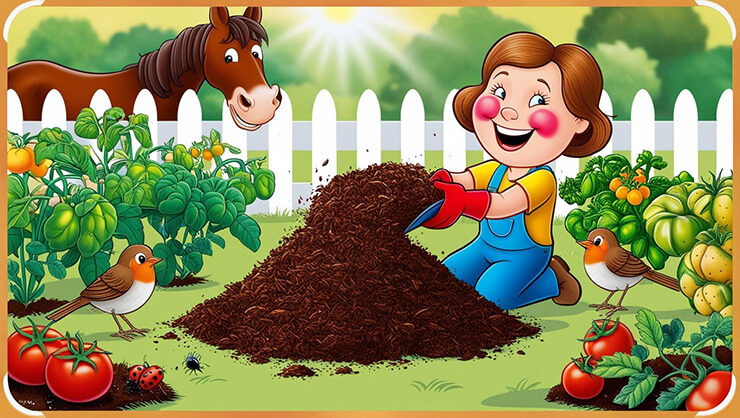Read by Matilda Longbottom

Organic gardening may not earn me any medals or book me a talk-show appearance, but it sure has its perks. For one, I know exactly where my fruits and vegetables come from—straight from my backyard, still warm from the sun. My grocery bill shrinks every year, and my food is free from pesticides that harm honeybees or cause birth defects in cute lab mice.
However, this gardening journey is full of hard work and unexpected twists. Last year’s bumper crop of melons doesn’t guarantee this year’s seeds won’t rot. Oh, beloved and unpredictable Mother Nature! She has handed me many a hearty joke, to quote Eeyore, during my years of organic gardening.
Take this year, for instance. For the first time, I had potato bugs. And not just a few. It was a full-blown invasion, like poking an anthill. Twice a day, I inspected the potato vines, squishing the striped adults and tossing the orange munchers into the yard, inviting the robins to a blue-plate special. Since the bugs were feasting on my potatoes, I figured fair is fair.
This had never happened to me before. I follow the gardening books religiously: I rotate crops in my raised beds, plant certified seed potatoes at the proper depth in early Spring, cover them with soil, and then hill up more soil as the plants grow. When the potato vines reach 2-feet-tall, I mulch them with leftover hay from the barn. Okay, the books say to use straw, but the old hay is free, and I’m frugal.
Our horse, Jake, may not have gourmet tastes, but we renew his Winter hay supply each year and use the old bales as garden mulch. It’s easy: just pull the bales apart and lay the flakes around the stems of tomatoes, peppers, and potatoes. Mulching cuts down on weeds, cools the soil on hot days, and conserves water. Totally a win-win. Usually, the mulch is thick enough to prevent hayseeds from sprouting. If they do, I simply turn them over with a garden fork to dry out in the sun.
This Spring, I planted and mulched two potato patches to ensure plenty for fresh eating and Winter storage. But there was a snag in my plan. I had mulched one patch twice and was just starting on the second when I ran out of old hay. Seems we’d been late with some Winter feedings, and our Houdini horse had helped himself to extra meals one too many times.
I’m not exactly a plant detective, so it took me a few days to notice something interesting. The potato bugs were only devouring the patch with less mulch.
Could it be that crawling through the extra mulch exhausted the bugs in their quest to find their way up? Could the extra mulch have made it too dark for them to follow the light to the surface? Could it be I read too many mysteries?
Researching in my gardening books, I found this to be true. Not that I read too many mysteries, but that mulching protects plants from several soil diseases and discourages potato bug infestations. From this serendipitous experience, I’ve learned to lay down a nice, deep mulch to deter even the most determined pests.
And to double-check that the stall door is securely latched and bolted. ❖
About the Author: Kay Flowers is a green-thumbed wordsmith residing in the picturesque Appalachian region of Ohio. When not penning humorous tales of garden warfare, she can be found tending to her verdant oasis alongside her husband, Denny, and their vigilant feline companion, Stubby. With a background in education and library science, Kay is a fount of botanical knowledge, often found sharing her passion for medicinal herbs at the local farmers market. In addition to her gardening exploits, she is the creative force behind two captivating novels, “Caleb’s Daughter” and “Mustang Girl,” and contributes a monthly gardening column to a local publication.


 Previous
Previous

